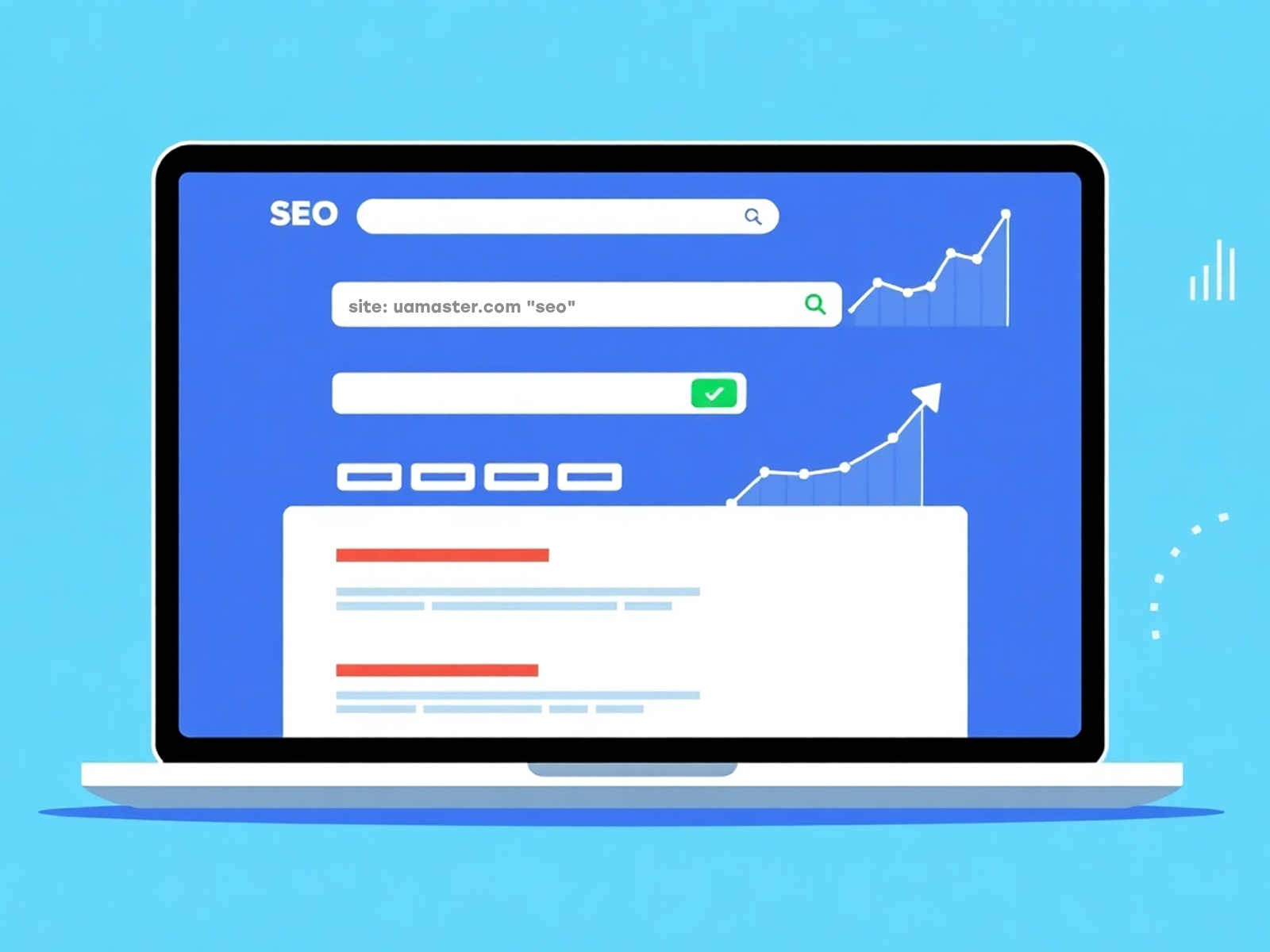Keyword cannibalization occurs when two or more pages on the same website target the same or very similar keywords and share the same search intent. As a result, these pages start competing against each other in search engine results. This issue is often confused with duplicate content or topical overlap, but there are important differences.
The key factor is user intent. If several of your pages unintentionally address the same audience need, they can interfere with each other’s ability to rank highly in search engines. In this article, we will explain how keyword cannibalization differs from other similar issues, how to identify it, and what steps to take to fix the problem.
What is the difference between keyword cannibalization, content overlap, and duplicate content?
Although these concepts are similar, they are not identical:
- Content overlap occurs when several pieces of content (even on different websites) cover similar topics and user intents, but do not necessarily use the same keywords. This often indicates a lack of a clear content strategy or segmentation.
- Duplicate content refers to nearly identical text appearing on different pages or domains. This situation is common on large websites with many template-based pages (for example, repeated products or page variations for different cities). As a result, multiple pages may compete for the same search queries.
- Keyword cannibalization is an internal issue where multiple pages on the same site compete for the exact same keyword and share similar search intent. This can weaken the overall authority of the site and prevent your pages from ranking highly if they do not address distinct user queries.
Why Does Keyword Cannibalization Harm SEO?
Keyword cannibalization perfectly illustrates the saying: “Too much of a good thing can be bad.” If your SEO strategy involves creating multiple pages targeting the same keywords, hoping to “outcompete” rivals, it actually harms your site instead of helping it.
Here’s how keyword cannibalization negatively impacts SEO:
- Dilution of ranking power across multiple pages
When several pages try to rank for the same query, their ranking strength is split. They compete for clicks, traffic, positions, and other engagement signals that would work better if focused on one powerful page. Instead of one high-ranking page, you get several pages ranking lower. This is critical because the top two positions in Google get almost three times more clicks than the third.
- Confusion for search engines about the priority page
If multiple pages target the same query and intent, search engines may not know which one to show. This leads to unstable rankings, lower click-through rates (CTR), and higher bounce rates.
- Loss of clicks due to showing the “wrong” page
When pages overlap in keywords or content, the search engine might display a less relevant page that doesn’t meet user expectations, causing CTR to drop.
- Inefficient use of crawl budget
Search engines allocate limited time to crawl your site. If they spend it on pages with similar content and keywords, they may not reach more important pages that could boost your site’s authority.
- Weakening page authority due to backlink splitting
To rank well, a page needs quality backlinks. When multiple pages compete for the same keyword, backlinks may be divided among them instead of strengthening a single authoritative page.
- Loss of ranking potential due to lack of one strong page
When one topic is scattered across multiple pages, each page gains less authority. It’s better to create one clearly defined, comprehensive, and relevant page with a higher chance to rank well.
Example:
Stampli has two pages ranking in Google’s top 10 for the query “best accounts payable software”:
- Product page (3rd position)
- Blog article about software features (10th position)
It’s important for the company that the product page ranks high for this commercial query. But having a blog covering a similar topic can dilute the product page’s authority, preventing it from ranking higher.
Also, the 10th position typically gets only about 2.4% of clicks, while the 3rd gets 11%, and the first position can get over 30%. This difference significantly impacts traffic and potential sales.
How to Detect Keyword Cannibalization?
Before fixing the problem, you need to know exactly where it occurs. There are several ways to identify keyword cannibalization on your site:
Manual Methods
- Google Search with the site: Operator
One of the simplest ways is to use Google search to see all your site’s pages that contain a certain keyword.
Query format:
site:yourdomain.com "keyword"
Example:
site:example.com "online insurance"
This will show all pages containing this keyword. Don’t worry if there are many results — not all of them necessarily rank for this query. But it’s a good start to spot internal competition between your pages.
Tip:
Focus on the top results — these are the most likely candidates for cannibalization conflicts.
- Using Google Search Console (GSC)
GSC is one of the most accurate ways to see which pages rank for the same keyword:
How to find it:
- Open Google Search Console
- Go to Performance > Search Results
- Click Add Filter → Query
- Enter the keyword
You’ll then see:
- Which pages appeared for that query
- How many clicks and impressions each received
- Their average position
This helps decide which page to keep, which to modify, and which to merge or remove.
- Using the &filter=0 parameter in Google Search
Another way to see real competition between your pages is to add &filter=0 to the Google search URL.
This disables grouping of multiple results from the same domain and shows how many pages from your site rank separately. It helps find pages that Google usually “hides.”
Automated Tools for Detecting Cannibalization
- Semrush
The “Position Tracking” tool includes a Cannibalization Report that evaluates your site’s health regarding this issue. It shows:
- Which pages overlap by keywords
- Which pages to merge or redistribute
- Which page to keep as the main one
- Screaming Frog
Can crawl your site and detect similar content, duplicate titles, H1s, meta tags, canonical issues, and internal linking problems.
- Ahrefs
In Site Explorer > Organic Keywords, use the filter “Multiple URLs Only” to see keywords for which multiple pages rank simultaneously. You also get traffic, difficulty, and CPC metrics.
- TrueRanker
An affordable tool focused specifically on tracking keyword cannibalization. Works via integration with Google Search Console.
Signs of Keyword Cannibalization
During your audit, watch out for:
- Multiple pages ranking for the same keyword
Even if one is in the top results and another on page 5, this is already competition.
- Ranking drops after publishing new content
If new content is too similar to existing pages, both can lose rankings.
- Low CTR
If Google shows a less relevant page, users won’t click.
- High bounce rate
Search engines may display the wrong page, and users quickly leave without finding what they want.
How to Fix Keyword Cannibalization on Your Website?
Keyword cannibalization happens when multiple pages on your site are optimized for the same keyword or share a similar search intent. This creates competition between pages and reduces your chances of ranking high in Google. Here’s how to fix it:
Option 1: Merge Pages
When to use: Pages target the same keyword and have the same search intent.
- 301 Redirect
If one page performs significantly better (higher traffic, CTR, lower bounce rate), redirect the weaker page to the stronger one with a 301 redirect. This passes SEO value to the preferred page.
- Content Consolidation
If both pages perform similarly but cover the topic from different angles, combine them into one comprehensive article. Then set a 301 redirect from the old URL(s) to the new consolidated page.
Option 2: Differentiate by Search Intent
When to use: Pages share the same keyword but serve different user needs.
- Optimize each page for unique long-tail keywords.
Example:
- Page 1 — “best accounting software for startups”
- Page 2 — “cloud accounting software for small businesses”
Before implementing, make sure the new keywords:
a) Have real search volume
b) Match your product or service
Option 3: Use Canonical Tags
When to use: Pages are similar, but both should remain on the site.
- Add a
<link rel="canonical" href="URL-of-main-page"> tag on the less important page. This signals to search engines which version to consider primary.
Important: The canonical tag doesn’t block indexing or guarantee Google won’t rank duplicates. It should be used alongside other fixes.
Option 4: Audit and Optimize Internal Linking
When to use: Your internal linking structure is amplifying competition between pages.
- Assign a primary keyword to each page.
- Use that keyword or its variations as anchor text in internal links.
- Ensure important pages receive sufficient internal links, not just one of the competing pages.
Option 5: De-index or Use noindex Tag (Last Resort)
When to use: If a page brings no traffic, duplicates core content, and has no SEO value.
- Add
<meta name="robots" content="noindex"> to remove the page from search engine indexes.
Example: A helper page important for user navigation but shouldn’t compete in search results.
Warning: This method can cause loss of existing traffic, backlinks, or page authority. Make sure no important internal links point to the de-indexed page.
How to Prevent Keyword Cannibalization
To avoid keyword cannibalization, a proactive and structured approach is necessary. Here’s where to start:
Create and Maintain a Keyword and Content Map
A keyword map is a document or system where each page is assigned a unique keyword before it is created. This allows you to:
- Ensure no two pages compete for the same keyword.
- Create content tailored to the unique search intent of each page.
- Use a more detailed strategy, such as targeting long-tail keywords that expand the main topic.
Example approach:
Build a content strategy based on the pillar/cluster model.
- Choose 3–5 core topics aligned with your expertise and audience interests.
- Create supporting content (long-tail content) around each core topic that explores the subject from different angles and strengthens your authority.
Assign a Unique Keyword to Each URL
Another simple but effective step is to craft URLs based on the primary keyword of the page.
This helps search engines better understand your site structure and the topical focus of each page.
Example:
For an article optimized for the query “accounting software for startups”:
www.example.com/blog/startup-accounting-software
Foster Collaboration Between SEO and Content Teams
SEO should be integrated into every stage of website and content creation, not just as a final optimization step.
Smooth collaboration between teams prevents keyword duplication.
In practice, this may mean:
- Coordinating with technical specialists on SEO-friendly URL structures.
- Sharing information with the product team about new product pages and target keywords, so content teams avoid duplicating these queries.
- Joint planning of topics and content.
Conduct Regular Content Audits
Periodic audits help detect early signs of keyword cannibalization, such as:
- Traffic drops despite publishing new content
- Rising bounce rates
- Declining CTR in search results
- Unstable rankings
Each of these indicators alone may seem like random fluctuations, but together they signal deeper problems, including keyword cannibalization.
Helpful tools and practices:
Use SEO tools like Semrush Site Audit for automated checks. These tools allow you to:
- Identify duplicate or thin content
- See which pages rank for the same queries
- Detect internal errors such as broken links or redirect loops
- Track progress by comparing past audits with current results
If you want to save time on self-audits or need a comprehensive strategy without the risk of keyword cannibalization, consider ordering SEO services from UAMASTER. We will analyze your site, fix weaknesses, and help build stable organic traffic growth.
This article avaliable in Ukrainian.





